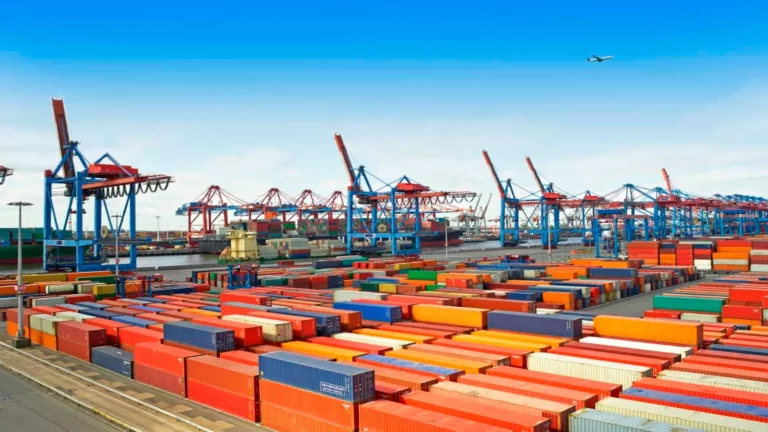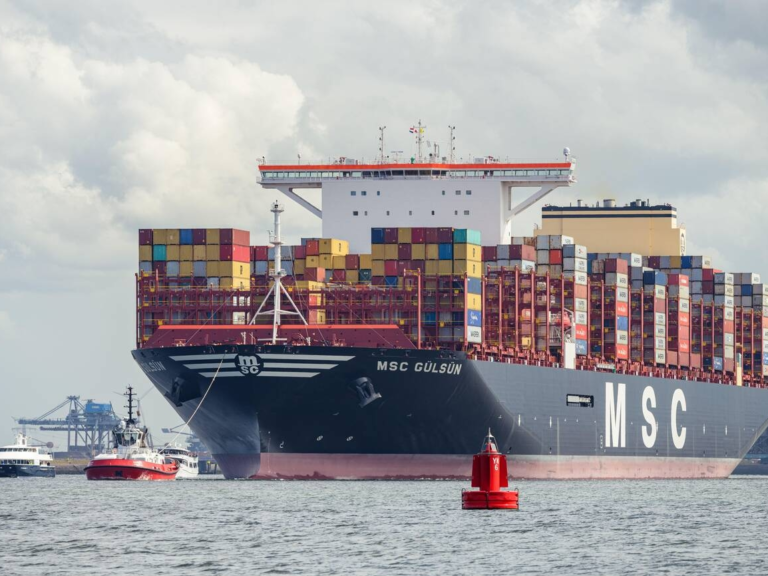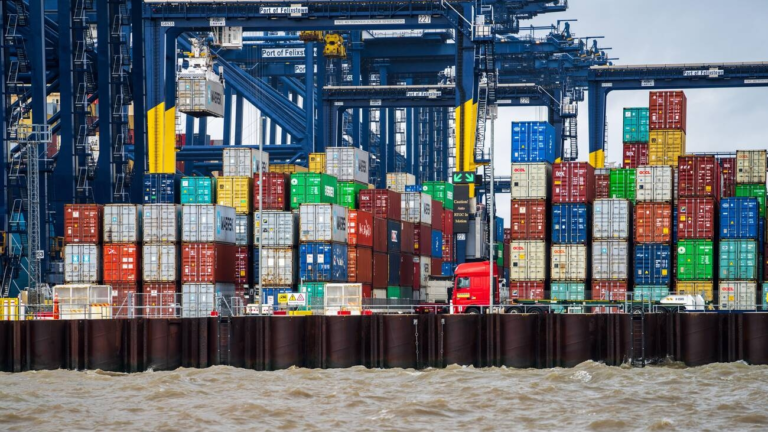Supply Chain Planning: The Backbone of Efficient Operations
Supply Chain Planning is the engine that powers efficient operations across industries. It’s what ensures products move seamlessly from suppliers to shelves, meeting customer demands without hiccups. For businesses, especially in a competitive B2B environment, mastering supply chain planning can mean the difference between success and falling behind.
This blog explores the definition, benefits, and strategies for effective supply chain execution, while also highlighting the importance of supply chain planning to enhance operations.
What is Supply Chain Planning?
Supply chain planning involves anticipating customer needs and managing resources to meet them efficiently. It ensures the right products reach the right place at the right time.
When I worked with a manufacturing client, they struggled with frequent stockouts. Through better demand planning, they identified peak sales patterns and aligned inventory levels. This shift not only reduced delays but also improved their customer trust.
Key aspects include demand forecasting, inventory management, and supplier coordination. Businesses use these to minimize costs, avoid overstocking, and maintain seamless operations.
Technological Tools in Supply Chain Planning
Technology has revolutionized supply chain planning, making processes faster and more accurate. Advanced tools help businesses predict demand, track shipments, and manage inventories in real-time.
Tools That Matter:
- Artificial Intelligence (AI): AI algorithms analyze historical sales, market trends, and even social media to predict demand. This improves decision-making for inventory and procurement.
- Enterprise Resource Planning (ERP) Systems: ERPs centralize data from departments like sales and logistics, allowing better communication and planning.
- Big Data Analytics: Companies can detect patterns and trends using analytics tools, optimizing inventory and supply routes.
- Cloud-Based Platforms: Real-time updates enable collaboration with suppliers and logistics partners.
A logistics company I worked with implemented cloud-based inventory management. It reduced errors caused by manual tracking and increased overall efficiency.
How Does Supply Chain Planning Work?
Supply chain planning orchestrates the complex process of balancing demand with supply to ensure smooth business operations. By combining data analysis, resource coordination, and strategic adjustments, it creates an efficient and responsive system.
Core Steps of Supply Chain Planning:
- Demand Forecasting: This is the starting point. Businesses analyze historical sales data, market trends, and seasonal patterns to predict future demand. Advanced tools now incorporate AI and machine learning, offering precise predictions based on multiple variables like social sentiment, competitor activity, and even weather conditions.
- Resource Allocation: Once demand is estimated, the next step is aligning resources. This includes ensuring raw materials, production capacity, and workforce are sufficient to meet anticipated needs. Businesses must consider lead times and supplier reliability to prevent bottlenecks.
- Supply and Production Scheduling: After resources are allocated, supply chain managers schedule production and delivery timelines. This step ensures that raw materials are converted into finished goods efficiently and shipped to their intended destinations without delays.
- Logistics Optimization: Transportation routes, warehousing, and distribution channels are refined to minimize costs and delivery times. This step often involves real-time tracking tools and route optimization technologies to reduce inefficiencies.
- Monitoring and Real-Time Adjustments: Unexpected events like delays, fluctuating demand, or supply shortages require continuous monitoring. Businesses use real-time data to tweak their plans, mitigating disruptions and maintaining service levels.
Example in Action:
During the holiday shopping season, retailers rely on demand forecasting to predict which products will see the highest sales. They preemptively allocate extra stock of these items, adjust warehouse operations, and secure additional transport capacity to avoid delays. If a spike in demand for a specific product occurs unexpectedly, they can reroute shipments or prioritize production lines to meet customer needs swiftly.
Supply chain planning isn’t a one-time activity. It’s an ongoing, iterative process that requires businesses to anticipate, allocate, and adapt. When executed effectively, it prevents stockouts, eliminates waste, and ensures products reach customers on time, driving both satisfaction and profitability.
Key Components of Supply Chain Planning
Each component plays a vital role in balancing supply and demand. Here’s a breakdown:
1. Demand Planning
Predicting how much of a product customers will need and when. Accurate demand planning reduces stockouts and minimizes excess inventory.
2. Inventory Management
Maintaining the right stock levels saves storage costs and prevents lost sales. Techniques like just-in-time (JIT) inventory and safety stock calculations help.
3. Production Planning
Efficient production planning ensures businesses meet demand without overburdening manufacturing resources.
4. Supplier Coordination
Collaborating with suppliers ensures timely delivery of materials. Strong supplier relationships also provide stability during disruptions.
A client I advised recently renegotiated contracts with their suppliers, leading to faster lead times and reduced costs.
Benefits of Effective Supply Chain Planning
A well-executed supply chain planning strategy directly impacts a business’s profitability, customer retention, and resilience. Here’s how it delivers value:
1. Cost Savings
Effective supply chain planning reduces operational costs in several ways. Precise demand forecasting minimizes overstocking, which ties up working capital and incurs high storage costs. At the same time, it avoids understocking, which can lead to expensive expedited shipping or lost sales. Optimized logistics such as choosing efficient transportation routes and consolidating shipments, further cut expenses. For example, companies using route optimization software save significantly on fuel and delivery times.
2. Enhanced Customer Satisfaction
Customers expect their orders to be fulfilled quickly and accurately. With efficient supply chain planning, businesses ensure they have the right inventory in the right locations, reducing the risk of delays or stockouts. This reliability fosters trust and loyalty. When shelves are stocked and deliveries are on time, customers are more likely to return and recommend the brand.
3. Better Risk Management
In today’s unpredictable environment, disruptions like supplier delays or sudden demand surges are common. A robust planning strategy identifies potential risks and implements buffers, such as safety stock or diversified suppliers, to handle unexpected events. Businesses that proactively plan for contingencies recover faster from disruptions, protecting both their operations and reputation.
4. Operational Efficiency
Efficient supply chain planning streamlines processes, reducing redundancies and manual effort. Automating tasks like inventory tracking or demand forecasting with advanced tools allows employees to focus on strategic activities instead of repetitive tasks. This optimization leads to faster production cycles, improved delivery times, and overall smoother operations.
5. Increased Profitability
By reducing waste, improving customer retention, and minimizing disruptions, businesses see a direct boost to their bottom line. Every avoided stockout and optimized shipping route translates into savings and higher margins.
6. Sustainability Improvements
Strategic supply chain planning also supports environmental goals. Optimized transportation routes reduce fuel usage, and lean inventory management lowers waste. Businesses aligning their supply chains with sustainability initiatives not only cut costs but also meet growing consumer demands for eco-conscious practices.
Why It Matters:
Effective supply chain planning isn’t just about saving money; it’s about positioning your business to thrive in a competitive market. By improving efficiency, satisfying customers, and reducing risks, businesses gain a long-term competitive edge.
Common Challenges in Supply Chain Planning
Effective supply chain planning can significantly enhance business performance, but it’s not without its challenges. These challenges often arise from the complexity of global networks, changing consumer demands, and unforeseen disruptions. Here’s a breakdown of some of the most common hurdles companies face in supply chain planning:
1. Inaccurate Data and Forecasting
One of the biggest obstacles to effective supply chain planning is inaccurate data. Whether it’s outdated sales figures, inconsistent inventory records, or unreliable supplier data, poor-quality information can skew demand forecasts and disrupt planning.
Inaccurate demand forecasting can lead to stockouts or overstocking, both of which are costly. To mitigate this, companies must invest in data cleansing tools and automated forecasting systems. By leveraging real-time data, companies can make more accurate predictions, reduce risks, and improve decision-making.
2. Supply Chain Visibility Issues
Many businesses struggle with limited visibility across their supply chains. Without real-time access to inventory levels, shipment statuses, and production schedules, businesses cannot react quickly enough to changes. This lack of transparency leads to delays and inefficiencies.
Companies can address this issue by investing in supply chain visibility tools such as cloud-based platforms and real-time tracking systems. These tools help centralize data, providing a unified view of operations and enabling timely adjustments to avoid disruptions.
3. Unforeseen Disruptions
Natural disasters, geopolitical issues, and global pandemics like COVID-19 can all severely disrupt supply chains. The unpredictable nature of these events makes it difficult to plan for all potential scenarios.
However, businesses can reduce their vulnerability by creating flexible, agile supply chain plans. Diversifying suppliers, maintaining safety stock, and establishing contingency plans are effective strategies to mitigate the impact of such disruptions. Companies can identify alternative suppliers in different regions, ensuring that operations can continue even when one supply route is affected.
4. Coordination Between Different Departments
Supply chain planning requires seamless coordination between departments such as procurement, production, and logistics. Miscommunication or siloed operations can lead to missed deadlines, inaccurate forecasting, or inefficient processes.
Collaboration tools and integrated Enterprise Resource Planning (ERP) systems help ensure that all departments are on the same page, providing real-time data and allowing for proactive decision-making. By fostering strong interdepartmental communication and collaboration, companies can improve overall efficiency and ensure smoother operations.
5. Supplier Relationship Management
Maintaining strong relationships with suppliers is crucial for effective supply chain planning. However, issues like fluctuating supplier performance, unreliable delivery schedules, and fluctuating material costs can lead to major planning disruptions.
Building solid partnerships with suppliers, regularly evaluating their performance, and diversifying your supplier base can reduce the risk of dependency on a single source. This diversification is especially important during crises or when dealing with suppliers in regions prone to instability.
6. Resource Constraints
Limited resources whether it’s production capacity, workforce availability, or raw materials, can prevent a company from meeting demand. Efficiently allocating resources and optimizing production schedules are key to overcoming these constraints. Implementing advanced supply chain planning software and scheduling tools can help companies allocate resources more effectively, ensuring that demand is met without overburdening the system.
7. Lack of Skilled Talent
As supply chain planning becomes more complex and data-driven, the demand for skilled professionals in logistics, procurement, and data analysis increases. Companies often face difficulties in recruiting and retaining the right talent to manage these advanced systems.
Investing in training programs and offering competitive salaries can help businesses attract and retain the right professionals. Additionally, automating repetitive tasks allows existing talent to focus on more strategic activities, further enhancing planning accuracy and efficiency.
How to Overcome These Challenges
Addressing these common challenges requires a combination of technology, strategy, and people management. By implementing advanced tools, fostering collaboration across departments, and preparing for disruptions, businesses can create more resilient and efficient supply chain plans.
With continuous monitoring, a proactive approach, and the right resources in place, companies can overcome obstacles and stay competitive in a fast-paced, unpredictable world.
Strategies for Supply Chain Planning
Effective supply chain planning requires a strategic approach to overcome common hurdles and boost operational efficiency. Here are key strategies businesses should adopt:
1. Set Clear Goals and KPIs
Start by defining clear, measurable objectives. Focus on improving lead times, optimizing inventory levels, or increasing on-time deliveries. Setting specific Key Performance Indicators (KPIs) such as order fulfillment rate or inventory turnover helps track progress and keep the team focused. A well-defined goal directs the flow of resources and enables businesses to identify gaps early.
2. Invest in Employee Training
To unlock the full potential of advanced supply chain tools, it’s essential to equip teams with the necessary skills. Training helps staff leverage AI tools, ERPs, and cloud platforms for smarter decision-making. Regular training ensures that employees understand how to adapt to changing technologies, processes, and customer expectations. In the long run, this minimizes mistakes and streamlines workflows, boosting overall performance.
3. Leverage Technology for Smarter Decision-Making
Technology is a game-changer for supply chain planning. Artificial intelligence (AI) and machine learning algorithms enhance demand forecasting and inventory management, while cloud-based platforms provide real-time visibility across the supply chain. Integrating these tools with Enterprise Resource Planning (ERP) systems centralizes data, leading to better collaboration and faster decisions. Automation also cuts down on errors, saving time and money in the long term.
4. Promote Cross-Departmental Collaboration
Collaboration across various departments; sales, procurement, production, and logistics; is crucial for streamlining supply chain operations. By breaking down silos, businesses can achieve a unified approach to forecasting, inventory management, and procurement. When different departments collaborate and share data openly, they ensure that demand signals align with inventory and production schedules, reducing inefficiencies.
Future Trends in Supply Chain Planning
The future of supply chain planning is shaped by technological advancements and evolving market demands. Staying ahead of these trends is crucial for maintaining a competitive edge:
1. Sustainability Initiatives
The growing emphasis on sustainability is transforming supply chain operations. Companies are focusing on green logistics, such as reducing carbon emissions in transportation and optimizing packaging to reduce waste. These sustainable practices not only appeal to eco-conscious consumers but also help businesses cut costs and improve efficiency.
2. Artificial Intelligence and Machine Learning
AI and machine learning are revolutionizing forecast accuracy. By analyzing vast amounts of historical data, customer behavior, and market trends, these technologies provide more precise demand predictions. This reduces errors in planning, prevents stockouts, and helps companies meet customer expectations with greater reliability.
3. Automation for Increased Efficiency
Automation is streamlining repetitive tasks in the supply chain. From order processing to inventory management, robotic process automation (RPA) frees up resources, allowing teams to focus on more strategic tasks. By reducing human errors and speeding up processes, automation boosts operational efficiency and lowers costs.
4. Blockchain for Transparency
Blockchain technology is being adopted to enhance transparency and traceability across the supply chain. By securely recording every transaction, companies can verify the origin of goods, track shipments, and ensure compliance with regulations. This visibility not only strengthens supplier relationships but also boosts customer trust by ensuring the authenticity and ethical sourcing of products.
Companies that embrace these trends are not only enhancing operational efficiency but also positioning themselves as leaders in an increasingly competitive and environmentally conscious market.
Conclusion
Supply chain planning is fundamental to business success. By focusing on accurate demand forecasting, efficient inventory management, and collaborative supplier relationships, companies can optimize their operations and boost customer satisfaction. Leveraging the right technologies, fostering cross-departmental collaboration, and adapting to future trends will ensure long-term growth and a competitive edge.
FAQs
1. What is the difference between supply chain planning and supply chain management?
Supply chain planning focuses on forecasting, inventory, and demand management, while supply chain management involves overseeing the entire process, from raw materials to final product delivery.
2. How can AI improve supply chain planning?
AI enhances forecasting accuracy by analyzing large data sets, improving demand predictions, and optimizing inventory management. This reduces stockouts and helps businesses respond quickly to changing market conditions.
3. Why is cross-departmental collaboration important in supply chain planning?
Cross-departmental collaboration ensures that all parts of the business work towards common goals. Sharing data and aligning objectives leads to better forecasting, smoother production schedules, and more efficient supply chain operations.
4. What are some common challenges in supply chain planning?
Common challenges include data inaccuracies, lack of communication between departments, unpredictable disruptions, and talent shortages. Overcoming these requires investing in technology, training, and improving internal collaboration.
5. How can sustainability be integrated into supply chain planning?
Businesses can integrate sustainability by optimizing logistics for fuel efficiency, reducing packaging waste, and sourcing products from suppliers with environmentally friendly practices. These actions not only benefit the planet but can also reduce costs and improve brand loyalty.





